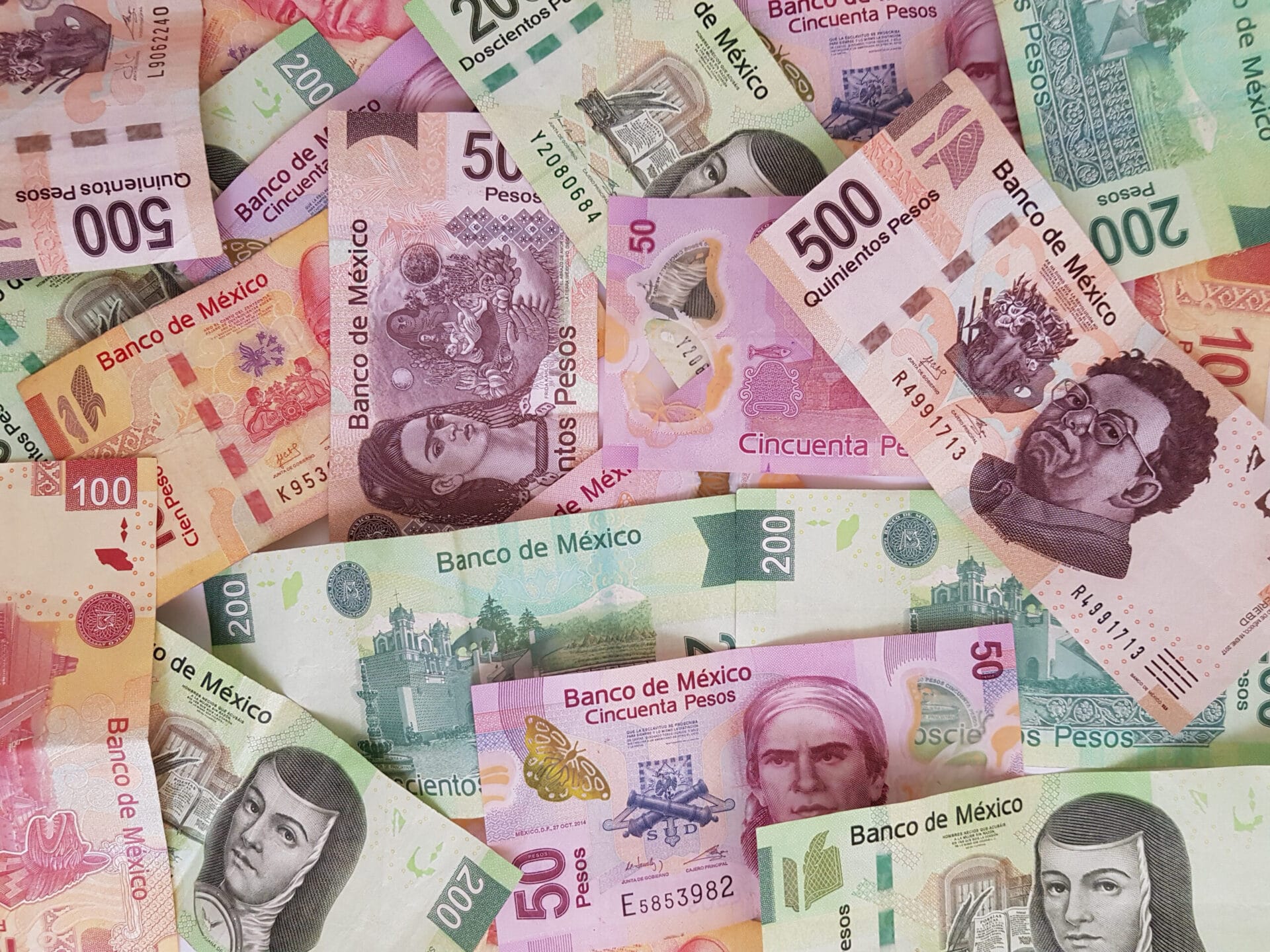BY CAM RENAUD
As one of the 53 million tourists that visit Mexico every year, I’m faced with the question, “Should I buy my Pesos now or should I wait?”
As Canadian snowbirds, we spend the winter months in Mexico at a casa we own, so our seasonal expenses add up when considering house maintenance, property taxes, HOA dues, utilities, car costs, groceries and planned dental expenses. It’s worth doing a little homework to forecast the best rate. So how often do I hit the bull’s eye? Well, it’s like winning an argument with my wife. It’s rare.
Currency forecasting is a mug’s game most of the time. There are sooo many factors that go into predicting exchange rates in the short term that make it challenging. However, trends do develop over time and that’s when I’ll step up and buy.
I’ve spent many hours researching economic figures and trends and I’ve studied (and passed the exams!) all the theories about how the currency cross rates (MXN/USD) are supposed to behave. But all of that is theory and more pertinent for periods longer than a year. Trying to make sense of inflation differentials, GDP forecasts, central bank policy, employment trends and interest rate movements is mind-numbing. After decades of crunching numbers, I have found the best way to do this is to just look at the daily chart, see where the trend in the peso vs U.S. dollar is headed and buy smaller amounts if the trend is in my favor (increasing) or step up for a larger amount if the trend is moving against me (declining). Either way I prepare myself for “buyer’s remorse”, the act of lamenting that I should have bought more or less in hindsight and beating myself up over it.
So, what am I thinking currently? Well, looking at the USD/MXN chart the rate is about MXN19 to 1 USD which is the same as it was in 2020 just before Covid started. Looking back further it was MXN13 in 2015; MXN19 looks pretty good. But wait. During Covid it got up to MXN25.75 — known as “the good old days”. That was a 35% premium over today’s rate. My buyer’s remorse just kicked in. I should have bought more.
At this point, the 5-year average is about MXN20 but I’m not convinced that average will hold into the future. The Mexican banks are forecasting a rate range for 2023 of MXN19 to 23 but new forces are at play which may render that forecast obsolete. The floor at 19 may not hold. Strong US employment data, stubborn inflation and forecasts for yet higher US interest rates theoretically support the case for a stronger USD. So why is the peso continuing to strengthen against the US dollar?
Ironically, those textbook axioms on how currencies should behave vis-a-vis each other aren’t holding true right now. The peso is gaining against both the US and Canadian dollars. Historically, higher interest rates in one country should lead to a higher exchange rate for that currency but a very interesting phenomenon is happening these days. Covid created supply chain disruptions caused by the China covid lockdowns and incentives by the US government to move production back to North America are having a major effect on the Mexican economy. Much of the manufacturing that was done in China is moving to Mexico (called “onshoring”) and it’s in the billions of dollars for Mexico as new factories are built.
Mexico is aggressively courting large US companies with competitive labor rates, labor availability, quality of goods produced, delivery lead time, and logistics costs. The move into Mexico by big US manufacturers is causing an unprecedented demand for MXN so personally I think the peso will continue to strengthen and the Mexican banks’ forecasts are wrong. I’m a buyer of pesos at 19/USD believing it’s headed to the 17 range by year-end especially as talk of the US Fed halting rate hikes later this year comes into effect. Mexican interest rate moves tend to lag the US move so Mexico is likely to have higher rates longer. That supports the peso strength argument, too.
For tourists coming to Mexico for a week or two, you will just be stepping up and buying what you need. Some Canadians first buy U.S. dollars and then convert the U.S. dollars to pesos. That’s a mistake because you are double converting and paying 2 sets of commissions. The best way for Canadians to get small amounts of pesos is to just use your debit card in the bank machine here. The alternative is to go to the currency exchange (Calforex) if you live in a larger city or see what your local bank has. The bank machine here will charge you about 5%, the same as Calforex or your bank so it’s about the same. Using a credit card will cost you about the same amount but introduces fraud risk at any of the smaller merchants. I always prefer to use cash unless it’s a big ticket item like the fridge I bought at Costco last year. I also wanted to use the credit card to get the extended warranty the card provides.
The bottom line is that instead of sitting in your kitchen trying to do endless hours of research, keep the analysis high level and stick to the charts because price action is the best culmination of all the analysis. Just go with the current trend and enjoy spending it. There is a good chance that in a year from now, I’ll look back and say once again, “Darn. I should have bought more last year.”


